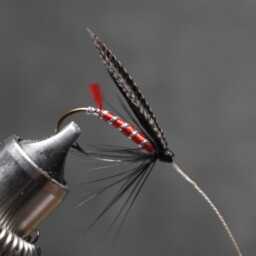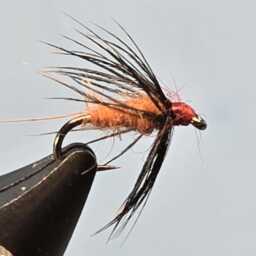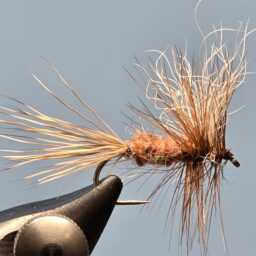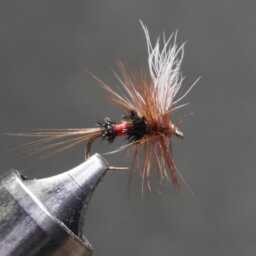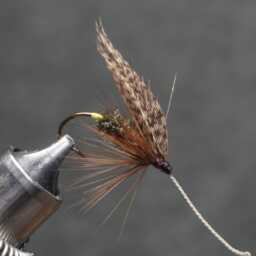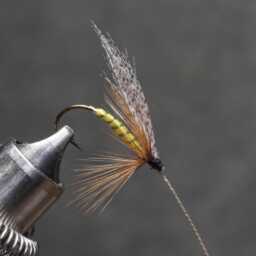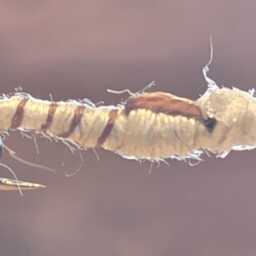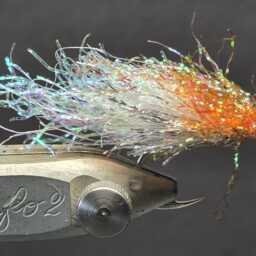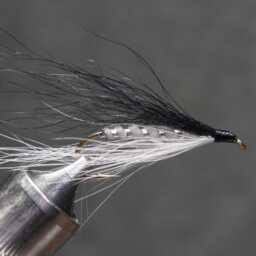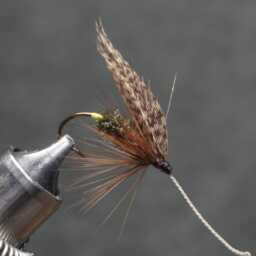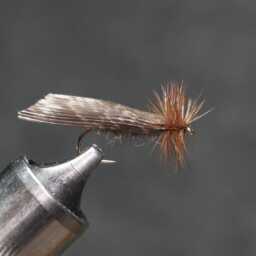Badger fur is a versatile natural material widely used in fly tying for a variety of applications, including wings, collars, tailing material, and dubbing. The long guard hairs of badger fur are ideal for creating wings and collars on different types of flies, such as trout streamers, saltwater flies, baitfish patterns, and those for salmon and steelhead. The mottled appearance of the guard hairs adds a unique texture and blend to these fly components. Additionally, the guard hairs are well-suited for tailing material on nymphs, dry flies, and poppers. The creamy underfur of badger fur is also used effectively for dubbing, providing a soft and textured finish to fly patterns.
Typically, badger fur is light-colored, long, wispy, and fine, with a standard piece measuring around 6 to 7 square inches.
Badgers, members of the Mustelidae family, are short-legged omnivores known for their squat bodies and adaptations for digging. This family also includes otters, wolverines, martens, minks, polecats, weasels, and ferrets. Badgers belong to the caniform suborder of carnivoran mammals and are classified into four subfamilies. These include the Melinae, which features species like the European badger, the Helictidinae or ferret-badgers, the honey badger or ratel in the Mellivorinae subfamily, and the American badger in the Taxideinae subfamily.
Badgers are among the most basal mustelids, with the American badger being the most basal, followed by the ratel and the Melinae. Estimates suggest these evolutionary splits occurred approximately 17.8, 15.5, and 14.8 million years ago, respectively. The two Asiatic stink badger species were once classified within the Melinae but are now recognized as members of the skunk family, Mephitidae, based on recent genetic evidence.
Badgers have distinctive anatomical features, including mandibular condyles that connect to long cavities in their skulls. This adaptation provides resistance to jaw dislocation and enhances bite grip strength, though it limits the range of jaw movements. Their bodies are short and wide, suited for digging, with elongated heads and small ears. Tail length varies by species: stink badgers have very short tails, while ferret-badgers can have tails up to 46 to 51 centimeters long. Badgers generally have black faces with white markings, gray bodies with a light stripe running from head to tail, and dark legs with light underbellies. They grow to about 90 centimeters in length, including the tail. The European badger is one of the largest, while the American badger, hog badger, and honey badger are slightly smaller. Stink badgers are even smaller, and ferret-badgers are the smallest of all, weighing between 9 to 11 kilograms, with some Eurasian badgers reaching up to 18 kilograms.
« Back to Glossary Index
